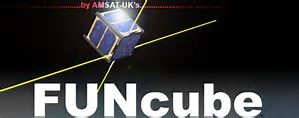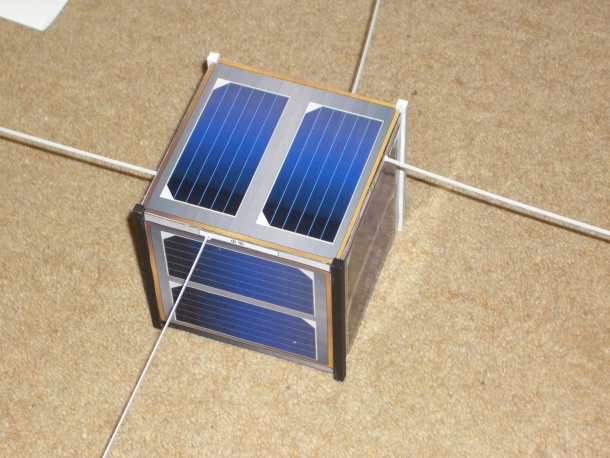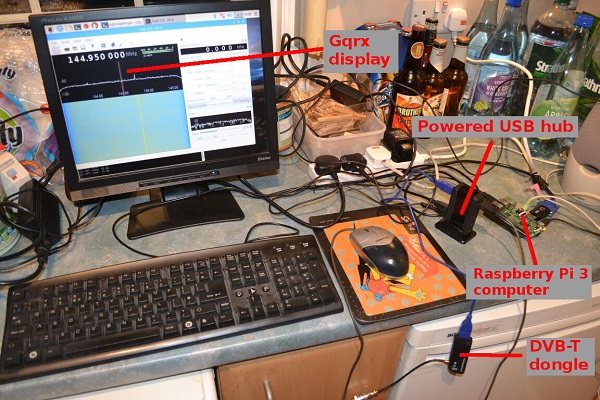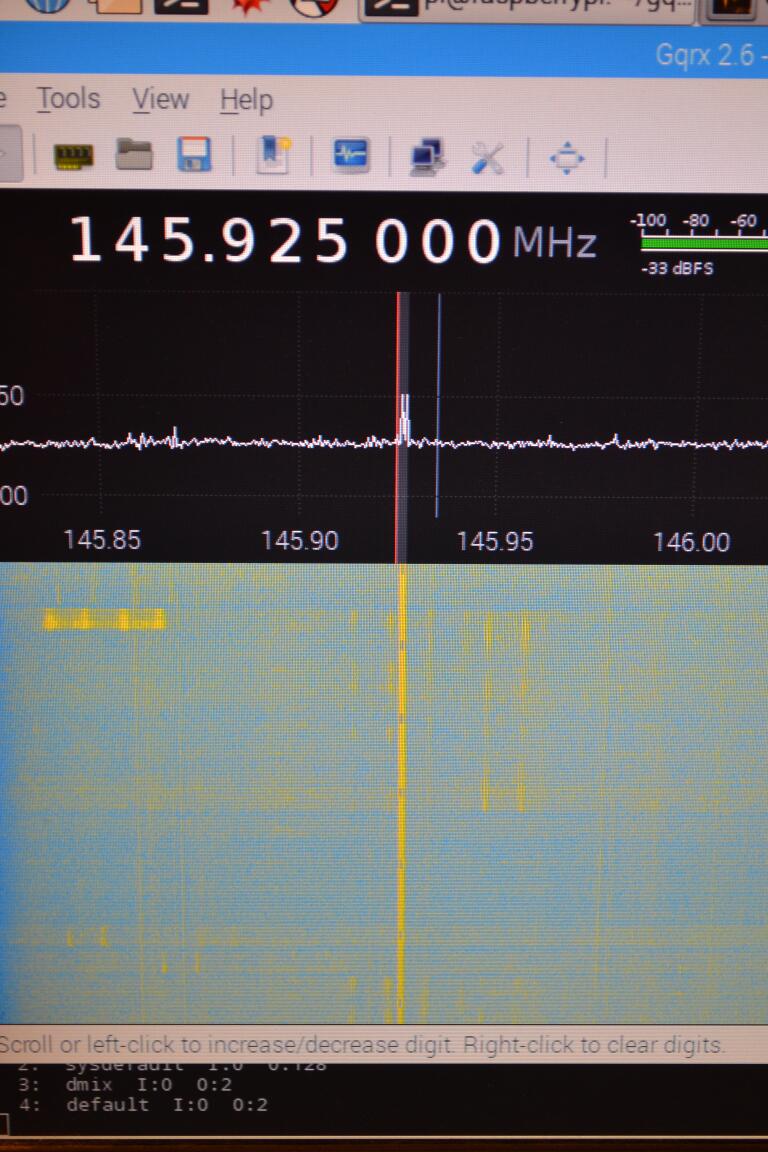
Following John Cooke’s talk on amateur radio applications for the Raspberry Pi microcomputer at the March 8th LRS meeting John now reports that he has successfully received the FUNCube-1 satellite using a Raspberry Pi 3.

FUNcube satellite – photos courtesy AMSAT-UK.
John writes: ‘Just managed the next stage of my satellite project successfully – photos attached. It uses the DVB-T dongle I had at the talk, and the Raspberry Pi 3 (at present). I’m really impressed that the satellite signal is so easy to receive with the dongle – I’m using a turnstile antenna for 145.9MHz outdoors, but many directions are somewhat screened by buildings.
After the FUNcube 1 pass, the Nayif-1 satellite was also received, even when it was less than 10 degrees above the horizon. I’m thinking it may be an even stronger signal than FUNcube-1.

‘Annotated photo of the setup. Signal comes in from the antenna to the Digital Broadcast Television dongle (cheap cheap) which is attached to a USB port on the Raspberry Pi (very cheap Linux based computer), running a software defined radio application called Gqrx and made available freely to the community by its kind author Alexandru Csete OZ9AEC. A great start, though I plan to put together software myself to make this a more specifically satellite receiving system.

‘The FUNcube 1 satellite signal. It can be seen as the two peaks next to the red line in the spectrum display, and as the yellow vertical “snail trail” down the waterfall display below. I’m sure it’s pretty well as good as what I’ve previously received using my FT-817, and the huge bandwidth means I don’t need to tune it; the software does that in the decoding’.
………………………………………………………………………………………………………..
